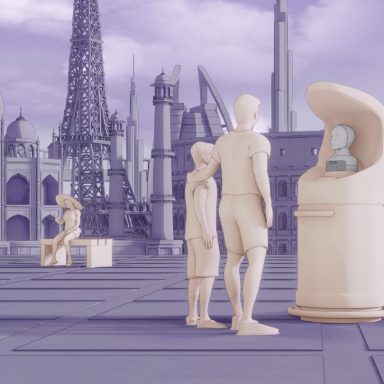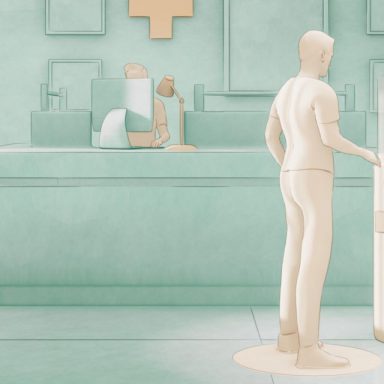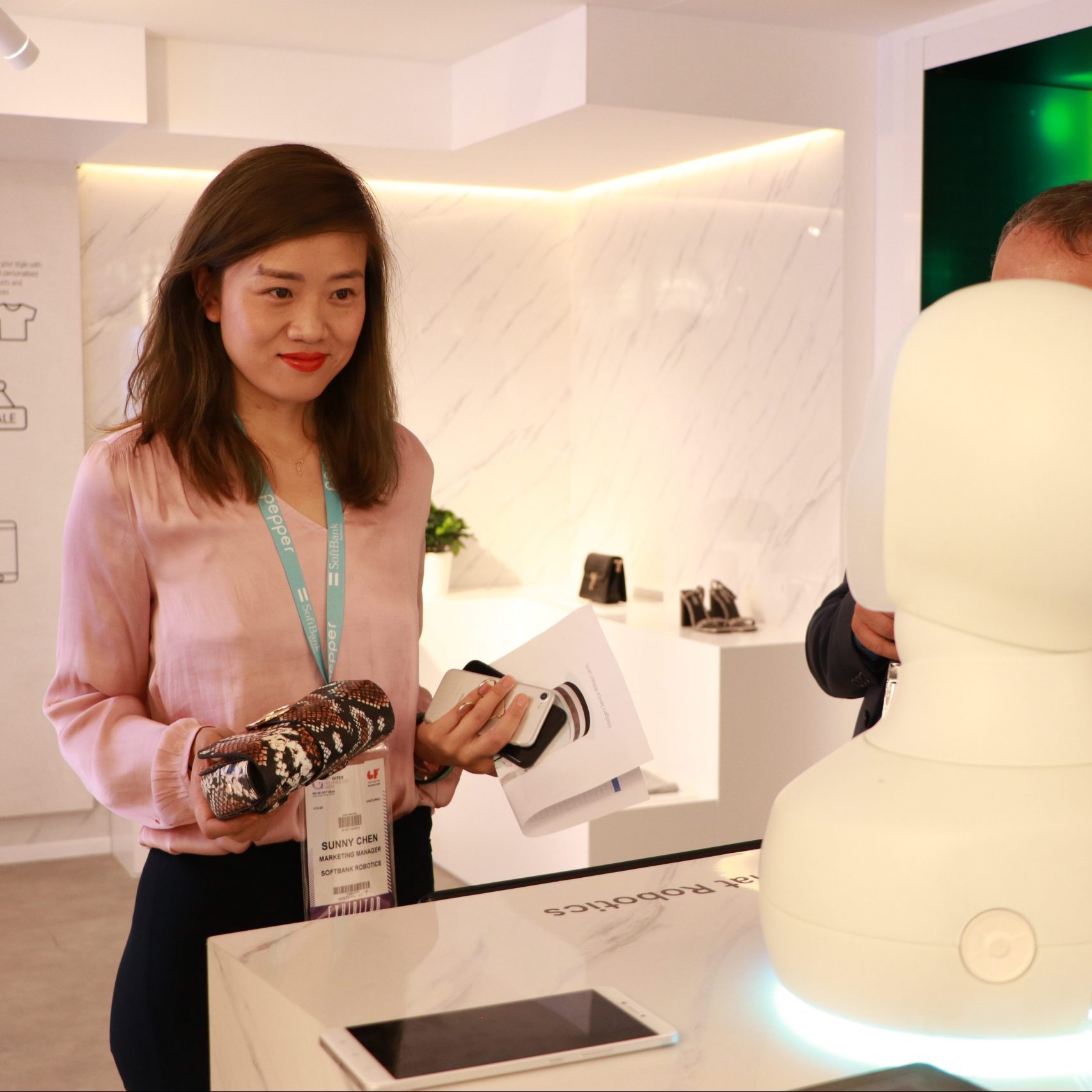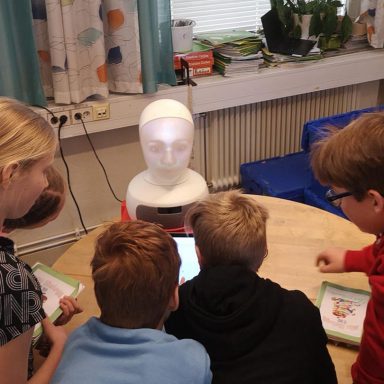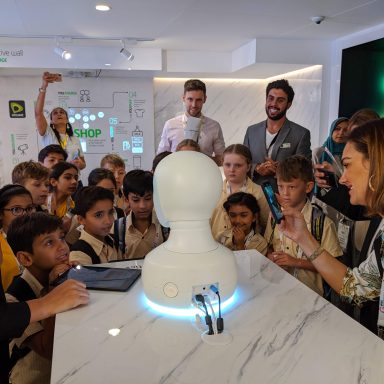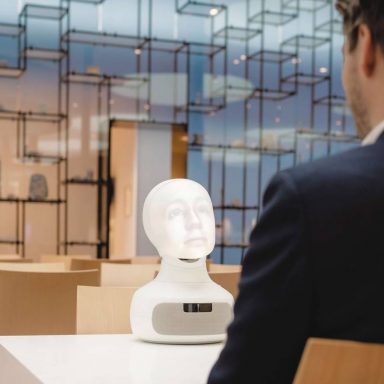You are about to meet a social robot.
Don’t take our word for it. Public venture capital investments in robotics nearly tripled from 2014 to 2015 alone, and KPMG estimates that 35 million personal service robots were sold between 2015 and 2018, with “1.5 million of them having social robot characteristics”.
Recent advances in technology such as natural language processing and speech recognition allow us to chat with machines in a more natural, less transactional way. Even Google is seeing an increase in conversational voice searches, which hints at an overall shift towards more natural speech when interacting with machines.
Honestly, it’s about time. Robots have been used in manufacturing for decades, and more than a quarter of homes today have a smart speaker.
We’re ready for the next step: making robotics more human, making interactions with them a natural part of our everyday lives. This is where social robots come in, and are already making a difference.
So what are the best applications for social robots? Which industries are on the verge of the new robotics revolution? Where will you meet a social robot tomorrow?
Although this list is far from comprehensive, we’ve got a few predictions…
1. Employee training
There is a fascinating category of use cases called “social simulation”, where a robot can simulate a character for humans to practice tricky social situations. For example, a mortgage advisor in a bank can practice how to deliver bad news, such as a rejected mortgage application, in a humane and confident manner. Or a sales assistant can learn how to handle unreasonable requests in a calm yet assertive manner.
There’s even a psychologist in Stockholm who is programming a “depressed” social robot to help train would-be psychotherapists. Amazing, right?
2. Unbiased recruitment
One of the most groundbreaking use cases of social robots is in recruitment – a field which, honestly, has been a bit stagnant over the past few decades. Most recruitment processes are still highly subjective, and the (often unconscious) biases of hiring managers and interviewers play a huge role in who gets called for a follow-up interview.
Enter Tengai, the world’s first unbiased interview robot, built by Furhat Robotics and recruitment agency TNG. Tengai doesn’t judge you based on the color of your skin, gender, accent, or age – and it’s already being used in Sweden to make the hiring process more fair.
3. Medical screening
Thanks to continuous advancements in medical science and nutrition, we live longer than ever. But there is a price to pay, in the form of overburdened public health systems across the world.
Social robots can help reduce some of the strain on society through increased awareness and access to early diagnosis of common diseases – diseases that in some cases can go undiagnosed until it’s too late. Furhat Robotics and Merck Group are working on this already. Watch the video below to find out more:
4. Helping children with autism
This is perhaps one of the most exciting and meaningful use cases for social robots – but it’s nothing new. Numerous studies – including from Yale – have found that social robots are a great fit for helping children with autism to learn social skills and emotional intelligence.
Typically children with autism find a robot less intimidating than a human. At the same time, a physically-embodied robot with a human-like face is still close enough to be a human to be a perfect middle-ground for therapy.
One study found that children with autism prefer to speak with a robot over a human adult or a computer avatar, and researchers at Durham University are testing social robots to help children with autism handle anxiety and uncertain situations.
5. Travel concierge
Le vol est-il retardé? Wo ist die Toilette? När går tåget? هل يمكنك مساعدتي؟
The world’s population is increasingly mobile, with around 258 million people living outside their country of birth, and international travel set to increase by another 35% over the next ten years.
And we all know the stress of being lost at an airport or train station, not knowing who to ask or where to go, and perhaps not speaking the local language.
This is an area where social robots can be of huge help to existing employees. And it’s already a reality at Frankfurt Airport and Berlin Central Station, where DB Systel and Furhat Robotics are testing FRAnny and SEMMI, two concierge robots that know all about arrivals and departures, gate/platform information, delays, and more in multiple languages.
6. Receptionist
Let’s face it: the modern reception isn’t always a very welcoming experience. In many cases, the warm, friendly face of a receptionist has been replaced with touchscreens and kiosks. More and more companies are replacing receptionists with automated visitor management software such as Envoy, which may be efficient but contributes to a cold, insular experience.
What if technology could bring some of that social connection back? Social robots make great receptionists! They are good at chit-chat, welcoming visitors, printing tags, offering beverages, guiding visitors to the right person, etc. Which is why Furhat Robotics is building the Greeter, one of the world’s first examples of autonomous robot receptionists.
7. Teaching Assistants
Here are the facts: we are facing a worldwide shortage of teachers, and student engagement is in decline. Students are not getting the interaction and one-on-one attention they need.
Social robots, used as an educational tool, can assist teachers and enhance the entire educational experience for students. Numerous studies show that robots can boost collaboration between students, increase engagement, help with cultural integration, and encourage creativity in the classroom. The City of Stockholm has already launched a pilot program with Furhat Robotics to see what impact social robots can have in the classroom – with promising results!
